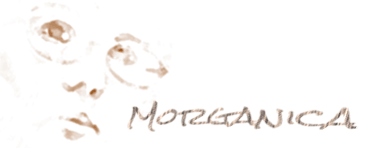 I know I said that I was off writing about glass projects for awhile (seeing as how I’m revamping the studio and swamped with dayjob stuff), but I just noticed that seven of the last eight posts were about restaurants. While that speaks well for my social life (I suppose), it does seem a bit lopsided.
I know I said that I was off writing about glass projects for awhile (seeing as how I’m revamping the studio and swamped with dayjob stuff), but I just noticed that seven of the last eight posts were about restaurants. While that speaks well for my social life (I suppose), it does seem a bit lopsided.
So, while I’m getting back into the groove, thought I’d dig out an older tackfuse project I meant to blog about awhile back, Chevronbowl, and see if anyone’s interested. This’ll be shorter (I hope) than most of those things usually wind up.
 ChevronBowl is another keystone project, albeit a simple one: I’m cutting and stacking strips of glass in patterns and letting the glass support itself as it slumps in and fuses together. The end result is surprisingly sturdy, although–like most of the keystone projects–I wouldn’t use it as a fruit bowl and I’d probably be really careful about picking it up by a single edge.
ChevronBowl is another keystone project, albeit a simple one: I’m cutting and stacking strips of glass in patterns and letting the glass support itself as it slumps in and fuses together. The end result is surprisingly sturdy, although–like most of the keystone projects–I wouldn’t use it as a fruit bowl and I’d probably be really careful about picking it up by a single edge.
Not a heckuva lot that’s odd to this one. I started by cutting a blujillion 3/8 inch strips of 3mm glass. Thin glass would make a prettier, tighter pattern, but likely not hold up if you grabbed it by a protruding edge.
 I chose French Vanilla, Spring Green, and True Blue glasses, keeping it fairly simple.
I chose French Vanilla, Spring Green, and True Blue glasses, keeping it fairly simple.
Using the BE flared square mold (I think it’s 8647), I carefully cleaned and laid down two squares of clear. The bottom-most was only slightly smaller than the bottom of the mold; the top piece was cut about an eighth inch smaller all ’round. That left a gap between the glass and the sidewalls, which I filled in with fine French Vanilla frit as a “grout.”
 I’m not sure the grout is strictly necessary in this piece; I usually use it in keystone projects to anchor all the pieces of glass and give multiple points of adherence, almost like a hot glue, to the glass on top.
I’m not sure the grout is strictly necessary in this piece; I usually use it in keystone projects to anchor all the pieces of glass and give multiple points of adherence, almost like a hot glue, to the glass on top.
But it kept the first strips from falling too far into the gap between mold and base glass, so they’d seat well with the bottom layer.
Once that was done, I took my finest Sharpie pen and drew the design directly into the kilnwash (keeping it light so the marks didn’t transfer to the glass).
After that, it was mostly a matter of cutting strips of glass to follow the pattern, and stacking it up. This piece is fired in a single tack-fuse, going hot enough to stick the pieces firmly together and slightly round off the edges, but no farther.
I used small drops of cyanoacrylate glue to hold key strips in place. It generally burns off in the kiln but can be a nuisance sometimes with transparent glass; it can leave a white powder if you’re not careful.
In pieces like this, it’s the overlaps that add strength, and so wherever I could I “stair-stepped” strip, and tried not to ever let strips of glass line up in successive edges. This ensured that strips would have at least two solid points of contact at every turn. I also interlocked the glass in the corners, brickwork-style, again for strength.
I wasn’t all that careful about the thickness of the strips, because I wanted a more human-looking appearance. And I knew the glass probably wouldn’t fall completely evenly, so perfectly even strips of glass might have been incongruous anyway.
Somewhere along the line (never watch TV when you’re doing this stuff) my stacking went spiral, so that no matter where I stopped the piece had one more row to go. I finally double-stacked one side to get back into gear, brought the other sides level, and called it quits.
I always give tack-fuse pieces at least 2X the recommended annealing schedule to minimize all those increased opportunities for stress. In this particular case, I went to 3x, and wound up with an anneal soak of nearly six hours. It came out fine, with no visible signs of stress.
And that’s pretty much it. In post-mortem, I kinda wish I’d gone with a colored bottom glass instead of clear, but other than that I’m fairly happy with it. And it’s given me several ideas for variations on this theme.

Very beautiful. A wonderful technique.
We viewers reap the benefit of all your hard work , time and patience.
I can only dream.
Thanks for sharing.
Bea